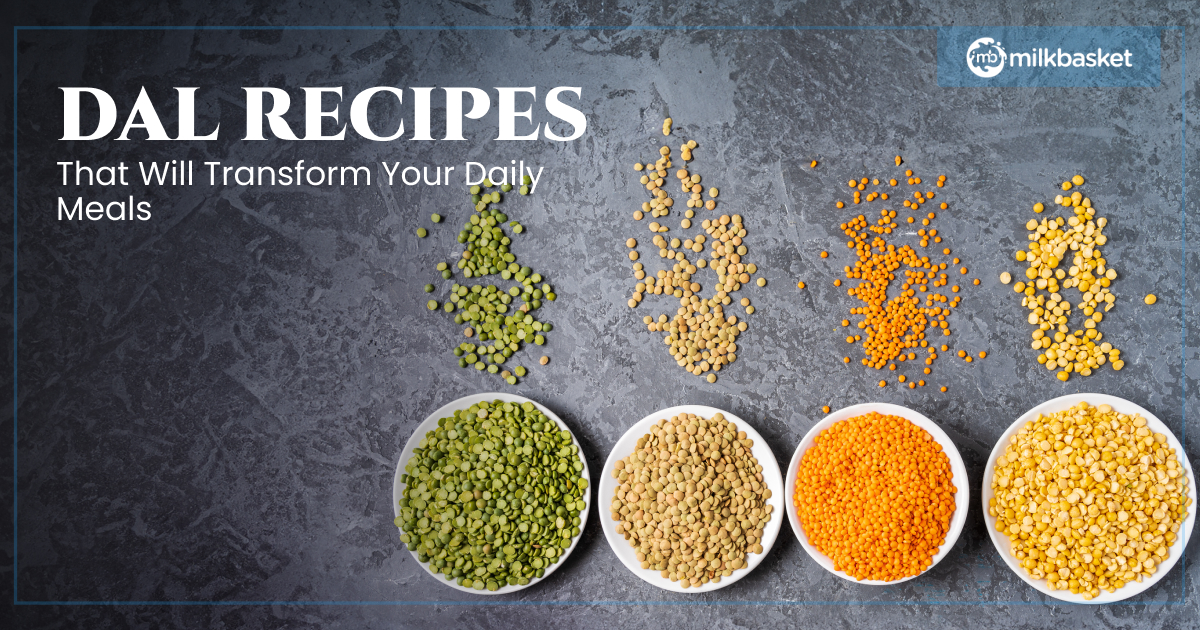Top 5 Dal To Cook Every Day
Does the thought of “What to cook today?” haunt you every evening? You’re not alone! Every Indian household faces this daily culinary dilemma, often leading to repetitive and uninspired meals. But fear not, for we have a simple yet delicious solution: dal! (Hint: Healthy dal recipes inside)
Not only are dals a staple in Indian cuisine, but they are also packed with nutrients, easy to cook, and versatile.
So, let’s put an end to your cooking woes with our top 5 healthy dal recipes to cook daily. Prepare to be delighted and relieved, as we spice up your kitchen routine with these humble yet heavenly legumes.
5 Must-Make Healthy Dal Recipes for Your Daily Cooking Routine
Green Gram Dal (Moong Dal)
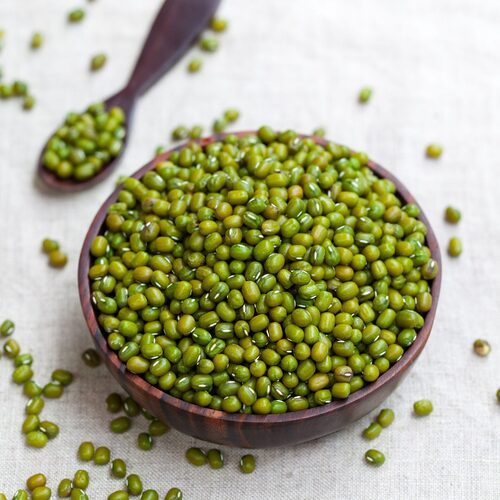
Moong dal, the miniature version of the green gram, is a power-packed combo of nutrition and culinary versatility.
Originating from the Indian subcontinent, this lentil is highly prized for its myriad health benefits and its ability to perfectly blend into a wide array of traditional and contemporary dishes.
Rich in protein, fiber, and an array of essential vitamins and minerals, moong dal is a beloved staple in many households across the region.
Its delicate, slightly sweet taste and soft, creamy texture make it an excellent choice for preparing classic Indian delicacies such as dal, sambar, and upma, as well as modern fusion recipes.
Additionally, the ease of digestion and the absence of strong flavors make moong dal a versatile ingredient tailored to diverse dietary preferences and culinary traditions, making it a nutritious and accessible choice for health-conscious consumers worldwide.
Moong Dal Tadka Recipe Ingredients:
- Moong Dal (Green Gram Dal): 1 cup
- Water: 3 cups
- Turmeric Powder: 1/2 teaspoon
- Salt: to taste
- Oil or Ghee: 2 tablespoons
- Cumin Seeds: 1 teaspoon
- Garlic: 4-5 cloves, minced
- Ginger: 1-inch piece, finely chopped
- Onion: 1 medium, finely chopped
- Tomato: 1 large, finely chopped
- Green Chilies: 2, slit
- Red Chili Powder: 1/2 teaspoon
- Coriander Powder: 1 teaspoon
- Garam Masala: 1/2 teaspoon
- Asafoetida (Hing): a pinch
- Fresh Coriander Leaves: for garnish
Cooking Instructions:
- Preparation:
- Rinse the moong dal thoroughly under running water until the water runs clear.
- Soak the dal in water for 15-20 minutes (optional, but helps in cooking faster).
- Cooking the Dal:
- In a pressure cooker, add the rinsed moong dal, 3 cups of water, turmeric powder, and salt.
- Close the lid and cook on high heat for 3-4 whistles.
- Let the pressure release naturally. Once done, open the lid and mash the dal lightly with a spoon or whisk. Set aside.
- Preparing the Tadka (Tempering):
- In a pan, heat the oil or ghee over medium heat.
- Add the cumin seeds and let them splutter.
- Add the minced garlic and finely chopped ginger. Sauté until golden brown.
- Add the finely chopped onions and sauté until they turn translucent and slightly golden.
- Add the slit green chilies and asafoetida (hing), and sauté for another minute.
- Add the finely chopped tomatoes and cook until they become soft and mushy.
- Add the red chili powder, coriander powder, and garam masala. Sauté for a few minutes until the spices are well cooked.
- Combining the Dal and Tadka:
- Pour the cooked moong dal into the pan with the tadka.
- Mix well and bring the mixture to a boil.
- Reduce the heat and let it simmer for 5-10 minutes to allow the flavors to meld together.
- Adjust the consistency of the dal by adding water if needed, and check the seasoning.
- Serving:
- Garnish with fresh coriander leaves.
- Serve hot with steamed rice, chapati, or any Indian bread.
Urad Dal (Black Gram Dal)
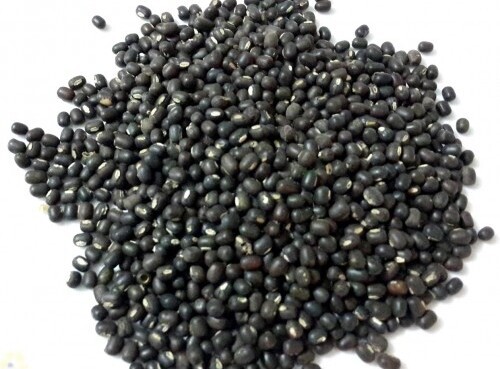
Urad dal, also known as black gram dal, is a versatile legume that holds a prominent place in Indian culinary traditions.
Originating from the Indian subcontinent, this small, round, and black-colored pulse is prized for its nutritional profile and diverse applications in the kitchen. Rich in protein, fiber, and essential minerals, urad dal is a powerhouse of nourishment, making it a dietary staple for many.
Beyond its role in classic Indian dishes like dal, it is also used to prepare a range of delicacies, from savory fritters (vadas) to sweet indulgences like parathas and halwa.
The creamy texture and earthy, nutty flavor of urad dal lend themselves well to a variety of cooking methods, from slow-simmered stews to crisp, golden-fried preparations.
Whether whole, split, or skinned, this adaptable legume continues to captivate the palates of food enthusiasts worldwide, offering a taste of the vibrant and diverse culinary heritage of India.
Let’s check this healthy dal recipes:
Spicy Urad Dal Recipe Ingredients:
- Whole Urad Dal (Black Gram Dal): 1 cup
- Water: 4 cups (for cooking the dal)
- Turmeric Powder: 1/2 teaspoon
- Salt: to taste
- Oil or Ghee: 2 tablespoons
- Cumin Seeds: 1 teaspoon
- Mustard Seeds: 1 teaspoon
- Asafoetida (Hing): a pinch
- Onion: 1 large, finely chopped
- Tomato: 2 medium, finely chopped
- Garlic: 5-6 cloves, minced
- Ginger: 1-inch piece, finely chopped
- Green Chilies: 2, slit
- Red Chili Powder: 1 teaspoon
- Coriander Powder: 1 teaspoon
- Garam Masala: 1/2 teaspoon
- Cumin Powder: 1/2 teaspoon
- Kasuri Methi (Dried Fenugreek Leaves): 1 tablespoon (optional)
- Fresh Coriander Leaves: for garnish
Cooking Instructions:
- Preparation:
- Rinse the urad dal thoroughly under running water until the water runs clear.
- Soak the dal in water for at least 30 minutes to 1 hour (optional, but helps in cooking faster).
- Cooking the Dal:
- In a pressure cooker, add the rinsed urad dal, 4 cups of water, turmeric powder, and salt.
- Close the lid and cook on high heat for 4-5 whistles.
- Let the pressure release naturally. Once done, open the lid and stir the dal. Set aside.
- Preparing the Tadka (Tempering):
- In a large pan or kadai, heat the oil or ghee over medium heat.
- Add the cumin seeds and mustard seeds, and let them splutter.
- Add the asafoetida (hing).
- Add the minced garlic and finely chopped ginger. Sauté until golden brown.
- Add the finely chopped onions and sauté until they turn translucent and slightly golden.
- Add the slit green chilies and sauté for another minute.
- Add the finely chopped tomatoes and cook until they become soft and mushy.
- Adding Spices:
- Add the red chili powder, coriander powder, cumin powder, and garam masala. Sauté for a few minutes until the spices are well cooked and aromatic.
- Add the kasuri methi (dried fenugreek leaves) if using, and mix well.
- Combining the Dal and Tadka:
- Pour the cooked urad dal into the pan with the tadka.
- Mix well and bring the mixture to a boil.
- Reduce the heat and let it simmer for 10-15 minutes to allow the flavors to meld together.
- Adjust the consistency of the dal by adding water if needed, and check the seasoning.
- Serving:
- Garnish with fresh coriander leaves.
- Serve hot with steamed rice, chapati, or any Indian bread like Tawa Roti or Rumali Roti.
Toor Dal (Pigeon Pea Dal)
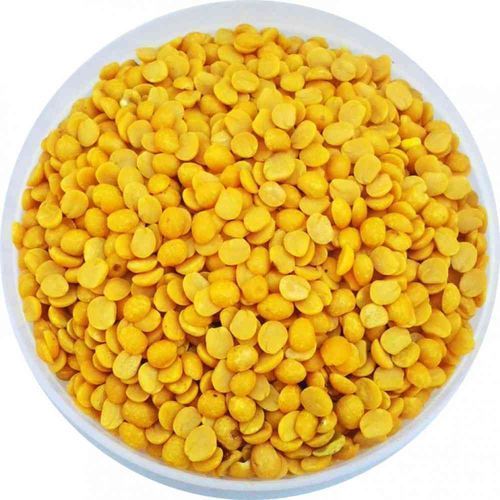
Toor dal, also known as pigeon pea dal, is a universal and nutrient-dense legume that has been a staple in Indian cuisine for centuries. Originating from the Indian subcontinent, this golden-yellow lentil is prized for its rich, nutty flavor and creamy texture, which makes it a popular ingredient in a wide array of traditional dishes.
Toor dal is high in protein, fiber, and essential vitamins and minerals, making it a nutritious addition to any meal. It is commonly used in curries, stews, and sambars, as well as in the preparation of various Indian breads like chapati and naan and snacks.
The versatility of toor dal allows it to be easily incorporated into both savory and sweet preparations, further contributing to its widespread popularity across the Indian diaspora.
Whether simmered into a comforting dal or incorporated into a flavorful curry, this universal legume remains an integral part of the diverse and vibrant culinary landscape of the Indian subcontinent.
Let’s explore this healthy dal recipes:
Bengali Style Toor Dal Recipe Ingredients:
- Toor Dal (Arhar Dal): 1 cup
- Water: 3 cups (for cooking the dal)
- Turmeric Powder: 1/2 teaspoon
- Salt: to taste
- Mustard Oil: 2 tablespoons (or any other cooking oil)
- Panch Phoron (Bengali Five Spice Mix): 1 teaspoon
- Bay Leaf: 1
- Dry Red Chilies: 2
- Asafoetida (Hing): a pinch
- Onion: 1 large, finely chopped
- Tomato: 1 medium, finely chopped
- Ginger Paste: 1 teaspoon
- Green Chilies: 2, slit
- Red Chili Powder: 1/2 teaspoon
- Cumin Powder: 1 teaspoon
- Coriander Powder: 1 teaspoon
- Garam Masala Powder: 1/2 teaspoon
- Sugar: 1 teaspoon (optional)
- Fresh Coriander Leaves: for garnish
Cooking Instructions:
- Preparation:
- Rinse the toor dal thoroughly under running water until the water runs clear.
- Soak the dal in water for 30 minutes (optional, but helps in cooking faster).
- Cooking the Dal:
- In a pressure cooker, add the rinsed toor dal, 3 cups of water, turmeric powder, and salt.
- Close the lid and cook on high heat for 3-4 whistles.
- Let the pressure release naturally. Once done, open the lid and set aside.
- Preparing the Tadka (Tempering):
- In a large pan or kadai, heat the mustard oil over medium heat until it begins to smoke slightly (this reduces its pungency).
- Add the panch phoron, bay leaf, and dry red chilies. Let them splutter.
- Add the asafoetida (hing) and sauté for a few seconds.
- Add the finely chopped onions and sauté until they turn golden brown.
- Add the ginger paste and slit green chilies. Sauté for another 1-2 minutes.
- Add the finely chopped tomatoes and cook until they become soft and mushy.
- Adding Spices:
- Add the red chili powder, cumin powder, and coriander powder. Sauté for a few minutes until the spices are well cooked and aromatic.
- Add the sugar (if using) and mix well.
- Combining the Dal and Tadka:
- Pour the cooked toor dal into the pan with the tadka.
- Mix well and bring the mixture to a boil.
- Reduce the heat and let it simmer for 10-15 minutes to allow the flavors to meld together.
- Adjust the consistency of the dal by adding water if needed, and check the seasoning.
- Finishing Touch:
- Add the garam masala powder and mix well.
- Garnish with fresh coriander leaves.
- Serving:
- Serve hot with steamed rice, chapati, or any Indian bread.
Masoor Dal (Red Lentil Dal)
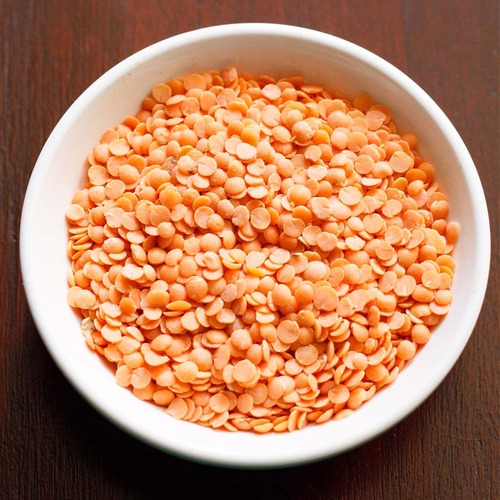
Masoor dal, also known as red lentil dal, is a reddish-orange lentil prized for its quick cooking time in Indian cuisine. This nutrient-rich legume is a staple in many households, offering a rich source of protein, fiber, and essential minerals like iron and potassium.
Its mild, earthy flavor pairs well with various spices, making it ideal for soups, stews, and curries. Masoor dal cooks quickly, usually within 15-20 minutes, without the need for soaking, making it a convenient option for busy cooks.
Additionally, it’s often used in making dal tadka, khichdi, and nutritious salads, adding both taste and health benefits to meals making it one of the healthy dal recipes out there.
Masoor Dal Recipe Ingredients
- Red Lentils (Masoor Dal): 1 cup
- Water: 3 cups
- Turmeric Powder: 1/2 teaspoon
- Salt: to taste
- Oil or Ghee: 2 tablespoons
- Cumin Seeds: 1 teaspoon
- Mustard Seeds: 1 teaspoon
- Asafoetida (Hing): a pinch
- Onion: 1 large, finely chopped
- Tomato: 2 medium, finely chopped
- Garlic: 5-6 cloves, minced
- Ginger: 1-inch piece, finely chopped
- Green Chilies: 2, slit
- Red Chili Powder: 1/2 teaspoon
- Coriander Powder: 1 teaspoon
- Garam Masala Powder: 1/2 teaspoon
- Fresh Coriander Leaves: for garnish
Cooking Instructions:
- Preparation:
- Rinse the red lentils thoroughly under running water until the water runs clear.
- Cooking the Lentils:
- In a pot, add the rinsed lentils and 3 cups of water.
- Add turmeric powder and salt.
- Bring to a boil, then reduce the heat and simmer until the lentils are tender, about 15-20 minutes.
- Preparing the Tadka (Tempering):
- In a separate pan, heat the oil or ghee over medium heat.
- Add the cumin seeds and mustard seeds. Let them splutter.
- Add a pinch of asafoetida (hing).
- Add the minced garlic and chopped ginger. Sauté until golden brown.
- Add the chopped onions and sauté until they turn golden.
- Add the slit green chilies and chopped tomatoes. Cook until the tomatoes are soft.
- Add red chili powder, coriander powder, and garam masala powder. Sauté for a few minutes until the spices are well cooked.
- Combining the Dal and Tadka:
- Pour the cooked lentils into the pan with the tadka.
- Mix well and bring the mixture to a boil.
- Reduce the heat and let it simmer for 5-10 minutes to allow the flavors to meld together.
- Adjust the consistency by adding water if needed, and check the seasoning.
- Serving:
- Garnish with fresh coriander leaves.
- Serve hot with rice or Indian bread.
Bengal Gram Dal (Chana Dal)
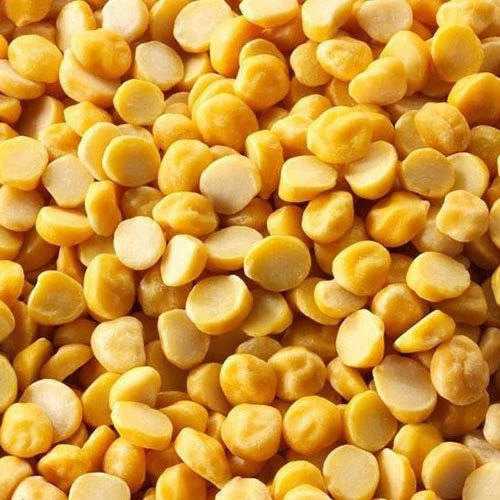
Bengal gram dal, also known as chana dal, is a golden-brown lentil prized for its distinct nutty flavor and firm texture. It is a staple in Indian cuisine, commonly used in soups, stews, and curries.
Chana dal is not only delicious but also packed with nutritional benefits. It is rich in protein, dietary fiber, and essential vitamins and minerals like iron, magnesium, and folate. Its low glycemic index makes it an excellent choice for managing blood sugar levels.
Also, chana dal can be ground into flour to make gram flour (besan), widely used in various savory and sweet dishes. So, are you ready to cook up this healthy dal recipes?
Bengali-Style Chana Dal Recipe Ingredients
- Chana dal (Bengal gram dal): 1 cup
- Onion, finely chopped: 1 large
- Tomato, finely chopped: 1 medium
- Ginger paste: 1 teaspoon
- Garlic paste: 1 teaspoon
- Green chilies, slit: 2
- Turmeric powder: 1 teaspoon
- Cumin seeds: 1 teaspoon
- Bay leaf: 1
- Cloves: 2-3
- Cinnamon stick: 1 small
- Green cardamom pods: 2-3
- Cumin powder: 1 teaspoon
- Coriander powder: 1 teaspoon
- Garam masala powder: 1 teaspoon
- Mustard oil (or any cooking oil): 2 tablespoons
- Salt: to taste
- Fresh coriander leaves, chopped: for garnish
Cooking Instructions:
- Preparation:
- Rinse the chana dal thoroughly and soak it in water for at least 1 hour. Drain the water before cooking.
- Cooking the Dal:
- In a pressure cooker, add the soaked chana dal, turmeric powder, and 3 cups of water. Cook for about 2-3 whistles until the dal is soft but not mushy. If using a regular pot, cook until the dal is tender.
- Tempering:
- Heat mustard oil in a large pan or kadai over medium heat until it reaches the smoking point. Allow it to cool slightly before reheating (this helps reduce the pungency of mustard oil).
- Add cumin seeds, bay leaf, cloves, cinnamon stick, and green cardamom pods. Sauté for a few seconds until fragrant.
- Sautéing Onions and Spices:
- Add the finely chopped onion and green chilies to the pan. Sauté until the onions turn golden brown.
- Add the ginger and garlic paste and sauté for another minute.
- Add the chopped tomato and cook until it becomes soft and the oil starts to separate.
- Adding Spices and Dal:
- Add cumin powder, coriander powder, and garam masala powder to the pan. Stir well to combine.
- Add the cooked chana dal to the pan and mix well. Adjust the consistency by adding more water if needed.
- Add salt to taste and let the dal simmer for 5-10 minutes on low heat, allowing the flavors to blend.
- Finishing Touch:
- Turn off the heat and garnish with fresh coriander leaves.
- Serving:
- Serve the Bengali-style chana dal hot with steamed rice or roti.
Create Flavorful Daal Dishes in Minutes with Milkbasket
These five dals – green gram dal, urad dal, toor dal, masoor dal, and Bengal gram dal – are the quintessential choices for daily cooking in Indian households.
Each dal has its own unique flavor profile, nutritional benefits, and culinary applications, making them invaluable ingredients in the vast and diverse world of Indian cuisine.
By mastering the art of cooking these healthy dals recipes, you can not only nourish your body with a rich source of protein and fiber but also explore the vibrant and flavorful depths of traditional Indian cooking.
With Milkbasket, you can get all of these legumes directly at your doorstep at 7 AM the next morning.
Milkbasket offers a convenient solution for your daily essentials, including ingredients to make these dal recipes.
Download the Milkbasket app and easily explore our diverse product selection, including their popular “Dal Dhamaal” category, which features a wide range of lentils and legumes.
By adding your required items to the cart before midnight, you can avail of our early morning delivery service, ensuring your daily needs are met by 7 AM.
This seamless shopping experience allows you to save time and effortlessly manage your household grocery requirements.
Also Read:
Categories
Popular Posts
-

4 Eco-Friendly Decorations for Ganesh Chaturthi
Spread the loveLooking for sustainable eco Ganpati decoration ideas as Ganesh Chaturthi approaches on August 26, 2025? You’re not alone in wanting to celebrate Lord Ganesha while protecting our environment. This festival season, you can create beautiful decorations that honor tradition without harming the environment. Milkbasket understands your need for convenient online grocery delivery during […]
19 Aug 2025 read More... -

Milkbasket – A Revolution In The Online Grocery Delivery Services In India
Spread the loveThere’s no denying the fact that the pandemic has drastically changed the way people spend their time online, buying everything through various online retail platforms with the convenience of home deliveries in India. Milkbasket, with it’s features has proven to be a revolution in the online grocery delivery services in India. While stepping […]
08 Jul 2022 read More... -

Milkbasket’s Latest DVC Campaign Is Out, And It’s Quirky And Relatable As Heck!
Spread the loveThe year 2021 was all about patience, resilience, and the grind it takes to get back up from a worldwide slump that the COVID-19 pandemic had hit us with. It made us all revisit our roots, recalibrate our priorities, and strengthen our foundations. With the better part of 2022 gone into slowly spreading […]
28 Sep 2022 read More... -

Nabhi Chikitsa or Belly Button Therapy: The Simple Health Secret You NEED To Know!
Spread the loveOur Navel or Belly Button (scientific name Umbilicus) is believed to be the centre of our life force. Most of us take it as just another part of our body not knowing its deep, thrilling world. In ancient Hindu healing practices, the Navel is considered to be the most important point of the […]
08 Sep 2022 read More...

